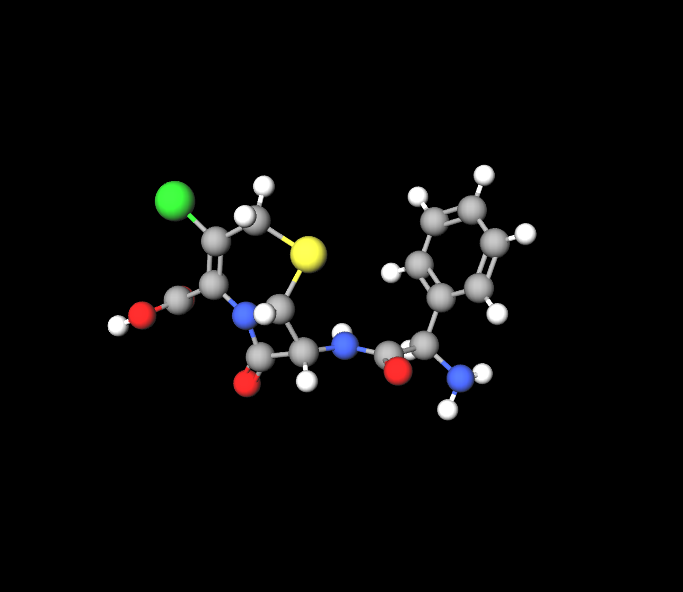Cefaclor Drops
- Introduction
- Composition of Cefaclor Drops
- Uses of Cefaclor Drops
- Off-Label Uses of Cefaclor
- How Cefaclor Works
- Dosage and Administration
- Administration in Special Populations
- Interactions with Other Medications
- Storage and Handling of Cefaclor Drops
- Warnings and Precautions
- Contraindications of Cefaclor
- Overdosage Information
- Important Precautions
- Careful Administration Guidelines
Introduction
Cefaclor, a cephalosporin antibiotic, has played a crucial role in fighting bacterial infections since it was first introduced. This medication became available in the 1970s. It has been effective in treating a wide range of bacterial illnesses, helping patients recover quickly. The importance of Cefaclor in controlling the impact of diseases is significant, serving as a key component in treating infectious conditions.
Composition of Cefaclor Drops
The creation of Cefaclor drops involves a mixture mainly consisting of Cefaclor as the main component, combined with different additives that enhance absorption and durability. Additives like stabilizers, preservatives, and solvents are essential for preserving the medicine's effectiveness and longevity. Knowledge about these elements is vital for healthcare providers to properly prescribe and advise on this medication.

Uses of Cefaclor Drops
- Cefaclor is primarily prescribed to treat the following conditions:
- Urinary tract infections
- Ear infections
- Skin infections
- Respiratory tract infections (such as pneumonia)
- Pyelonephritis (kidney infection)
- Streptococcal pharyngitis (strep throat)
- Streptococcal tonsillitis
- It is effective against a broad range of bacteria, including both Gram-positive and Gram-negative strains, making it a versatile choice in medical practice1.
Off-Label Uses of Cefaclor
How Cefaclor Works
Cefaclor works by blocking the production of the cell wall, which is crucial for the survival and reproduction of bacteria. When taken, it quickly enters the body and spreads to reach the infected area, ensuring that the medication effectively targets the infection site. This process not only hinders bacterial growth but also helps speed up recovery from infections.
Dosage and Administration
It is crucial to adjust the dosage of Cefaclor according to the patient's age, weight, and the seriousness of the infection. Healthcare professionals should educate patients on how to administer the medication for optimal effectiveness. Changes in dosage might be necessary depending on the patient's background and other medications they are taking to prevent any possible drug interactions.
Administration in Special Populations
Administration to Children
Kids are extra sensitive to doses. Cefaclor drops are often given to children for ear infections. It's crucial to measure the doses to prevent giving too little or too much.

Administration to Elderly
Elderly individuals might need medication doses because their kidney function could be affected or they may have other health conditions. It's crucial to monitor and tailor the dosages to make sure the treatment works well and avoid any side effects.
Administration to Pregnant Women and Nursing Mothers
Pregnant women and nursing mothers should approach the use of Cefaclor with heightened caution even though it is commonly deemed safe. It is important to evaluate any possible risks involved.
Interactions with Other Medications
Cefaclors effectiveness may be affected by how it interacts with medications, so it's important to be cautious when combining them. It is known to have interactions with gastrointestinal drugs, blood thinners and other antibiotics that can either reduce its effectiveness or increase side effects.
Common Interactions When used together with drugs Cefaclors ability to kill bacteria may be compromised.
Managing Interactions: Taking a look at a patient's medication list is essential to prevent harmful interactions.
Adjusting doses or changing medications may be necessary. Effects on Medication Effectiveness: Some interactions can lower the absorption of Cefaclor, reducing its ability to treat effectively and potentially causing treatment failures.
Storage and Handling of Cefaclor Drops
To ensure that Cefaclor drops remain potent and reliable it is crucial to follow the recommended storage instructions.
Storage Guidelines: It is important to store Cefaclor at room temperature, shielded from light and moisture, in order to maintain its effectiveness and prevent deterioration.
Shelf. Disposal: Patients should be mindful of the expiry date. Dispose of any unused or expired medication properly to prevent accidental consumption or harm to the environment.
Handling Precautions: To avoid contamination always keep the container sealed and use sterile methods when administering the drops.
Warnings and Precautions
Although Cefaclor is an antibiotic it's important to take precautions for safe use. Here are some key points to consider:
- Specific Caution; Patients who are sensitive to penicillins may experience a reaction to Cefaclor.
- Safety Measures; Keep a close eye on patients especially those with a past penicillin allergy for any signs of allergic reactions.
- Avoidance Guidelines: It's best to steer clear of prescribing Cefaclor to individuals with a known allergy to cephalosporin antibiotics.
Contraindications of Cefaclor
Some situations call for steering of Cefaclor because of increased risk factors or possible negative effects. Conditions to avoid: Cefaclor should not be used in individuals with a known sensitivity to cephalosporins. Risks in populations where it is contraindicated: For those who're hypersensitive, being exposed to Cefaclor may result in severe allergic reactions that could be life-threatening.
Overdosage Information
Accidentally or on purpose, taking too much Cefaclor can pose a significant threat to one's health. Warning signs of an overdose may consist of feelings of nausea, vomiting, and diarrhea. Immediate steps should be taken by starting lavage and providing overall supportive care without delay. While Cefaclor is usually well received by the body, consuming amounts over an extended period could potentially cause severe imbalances in the gut bacteria or impair kidney function.
Important Precautions
By taking safety precautions, you can lower the chances of complications while using Cefaclor. Safety measures involve monitoring kidney and liver functions to anticipate any potential issues. Additionally, it is recommended to have follow-up appointments to make sure the medication is working effectively and keeping the patient safe. Educating patients on how to identify reactions and when to seek medical assistance is also crucial.
Careful Administration Guidelines
Properly administering Cefaclor is crucial for its effectiveness in treating infections. Providing patients with guidance on dosage and timing is key to achieving the best treatment results.
Strategies to Improve Effectiveness: Consistently following a dosing schedule can aid in keeping drug levels in the body.
Regular Checkups: Periodic evaluations can help determine if any treatment adjustments are necessary to improve efficacy or manage side effects.












